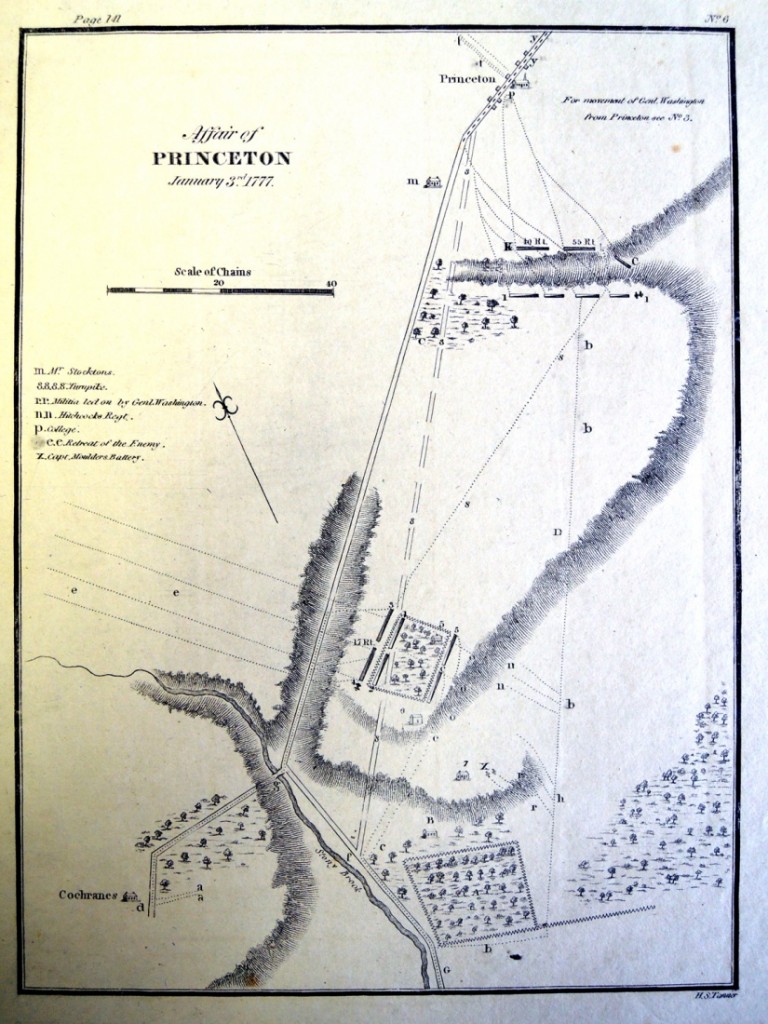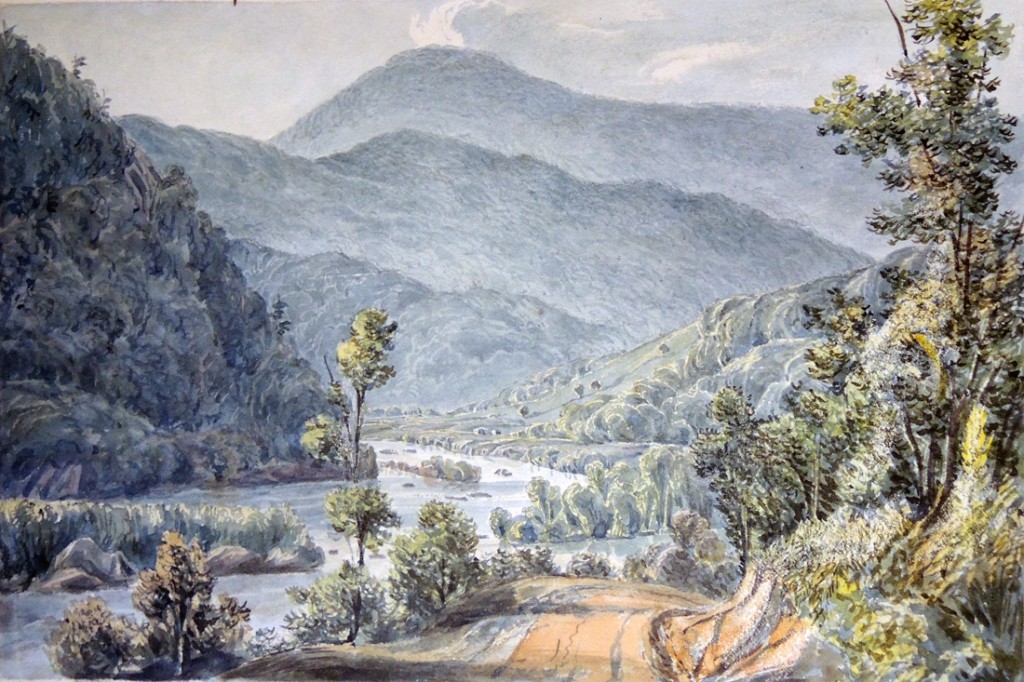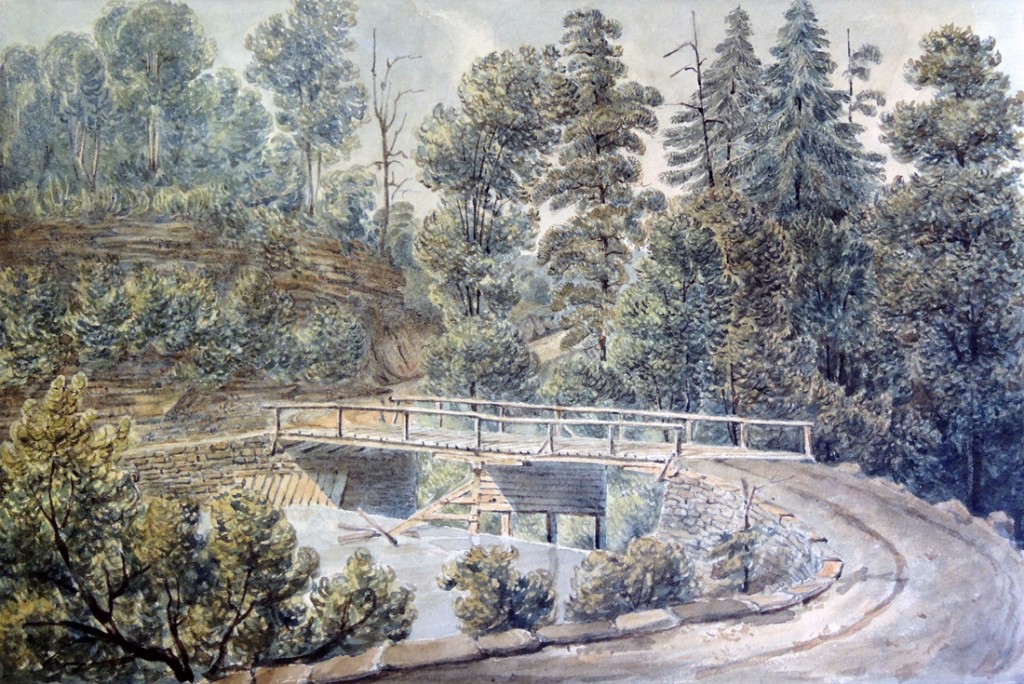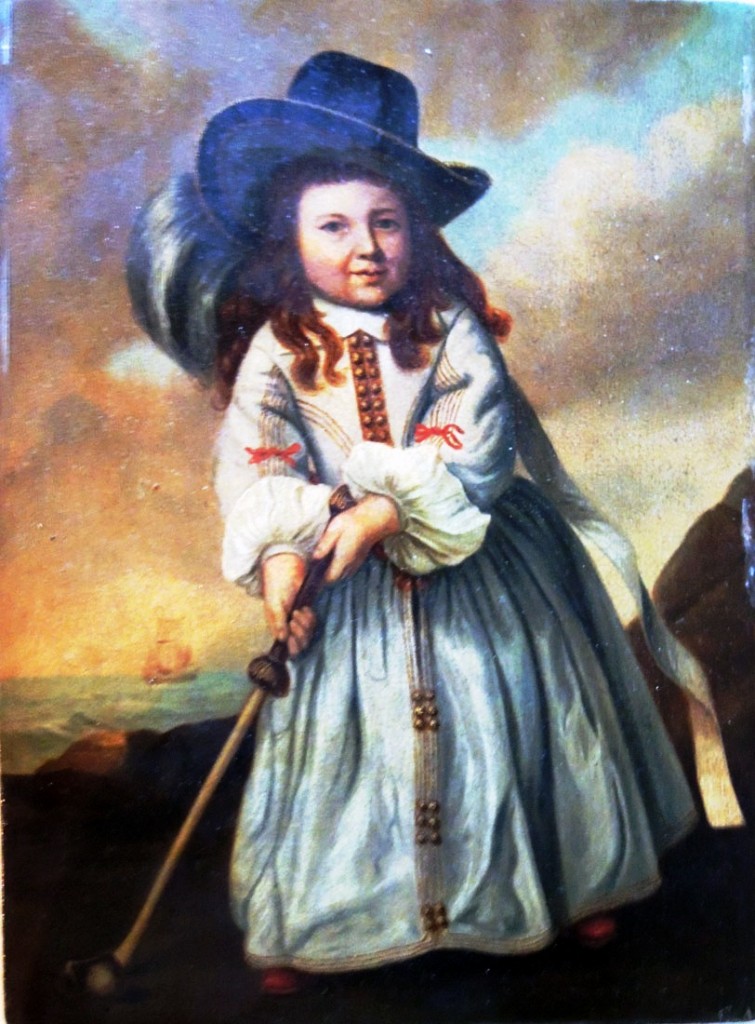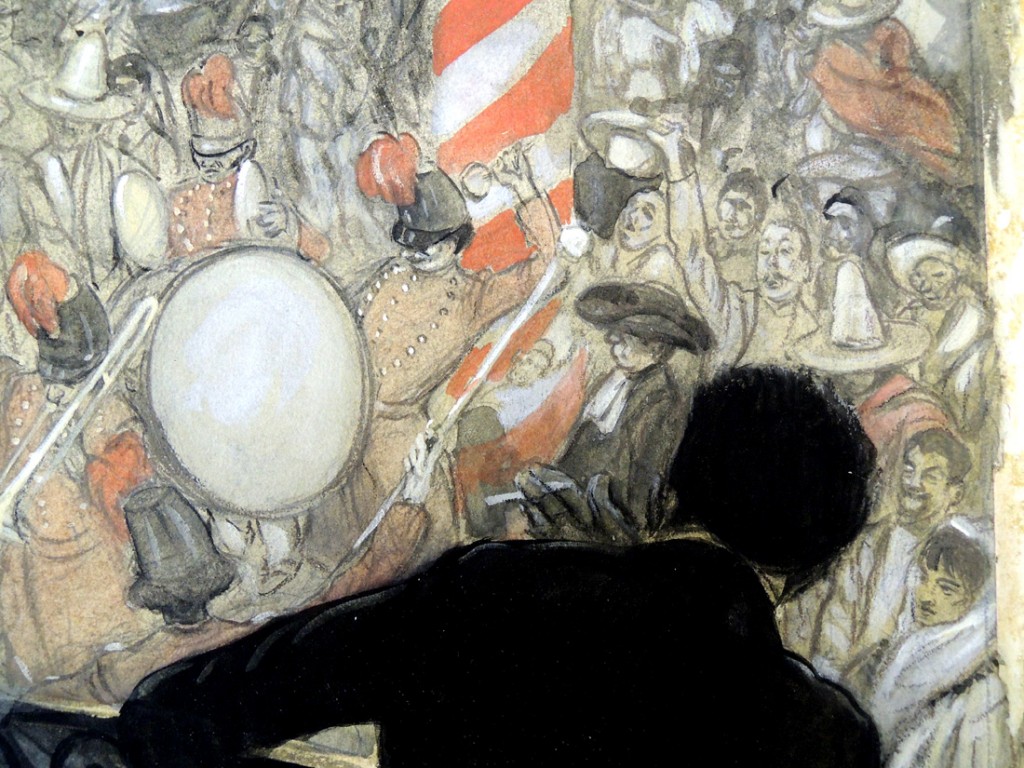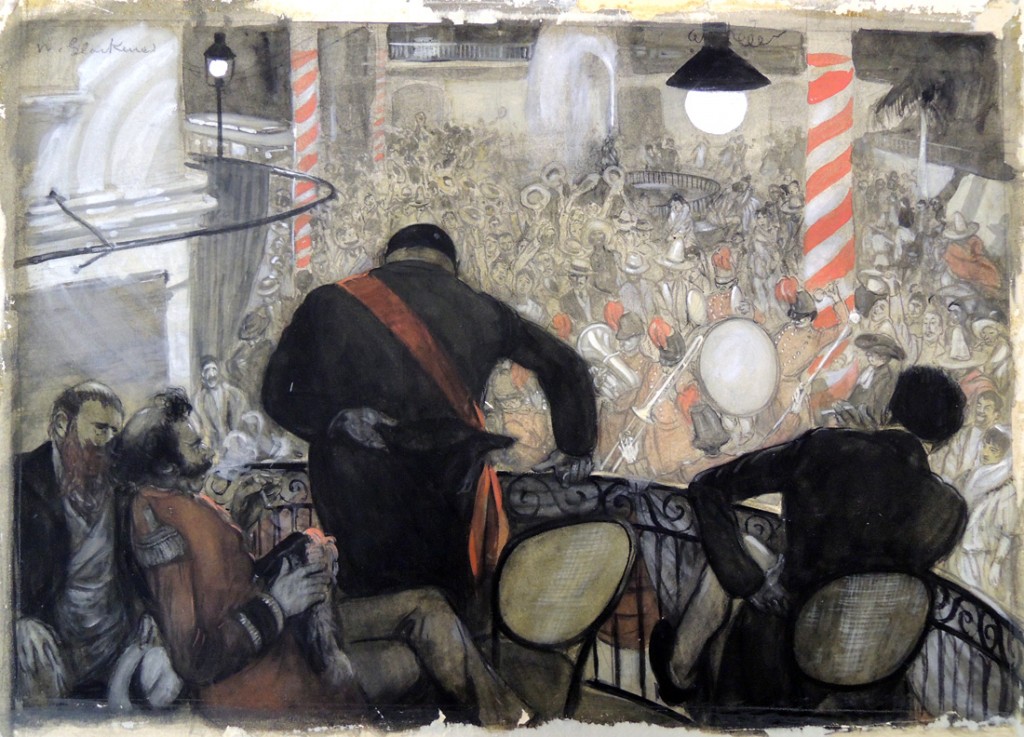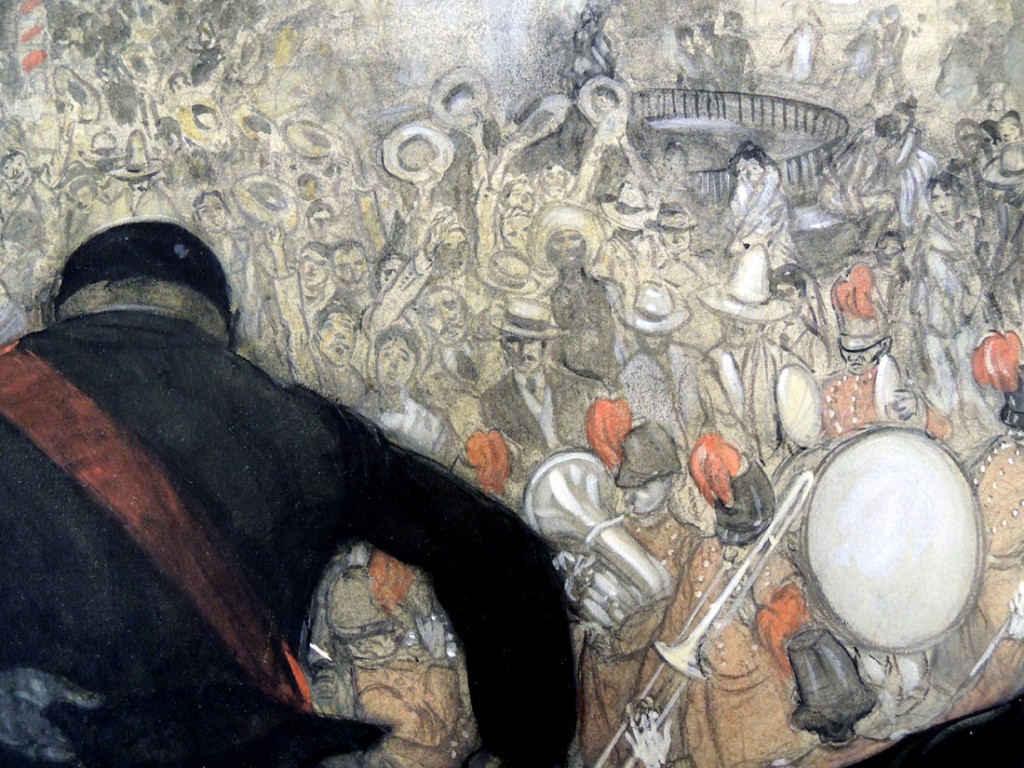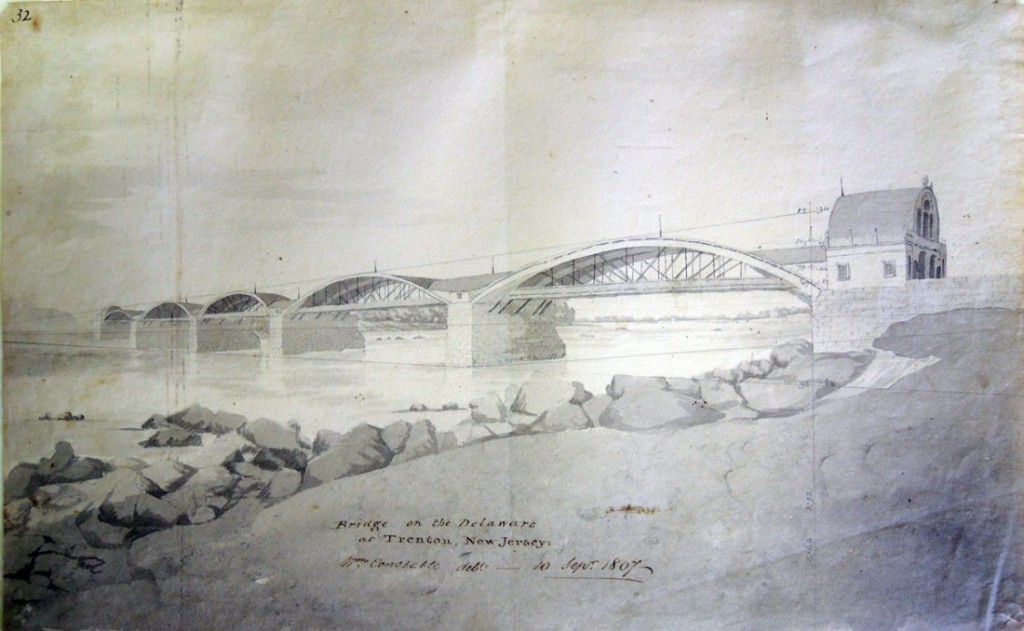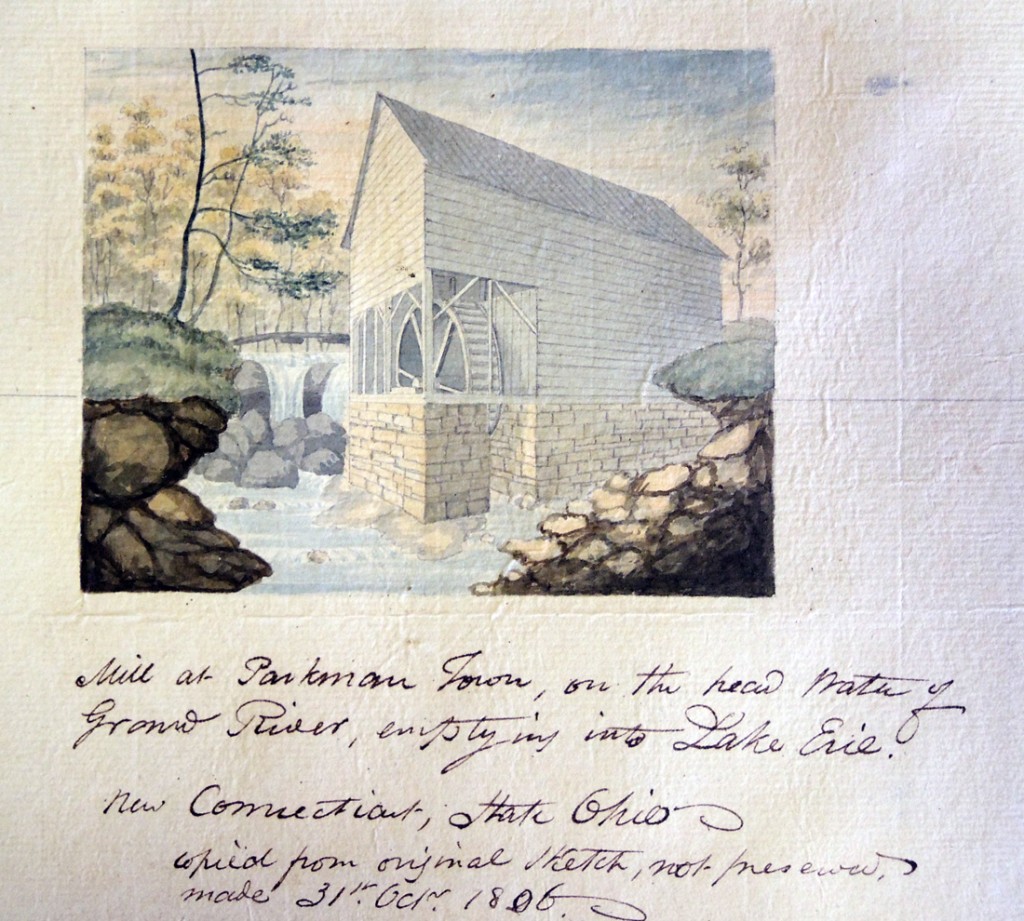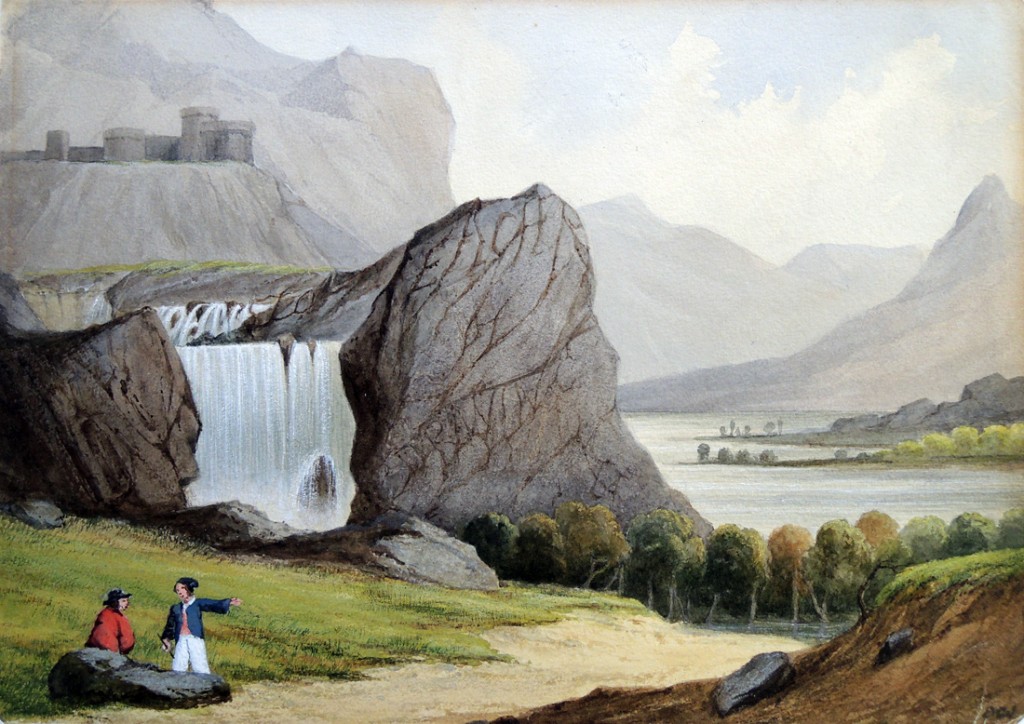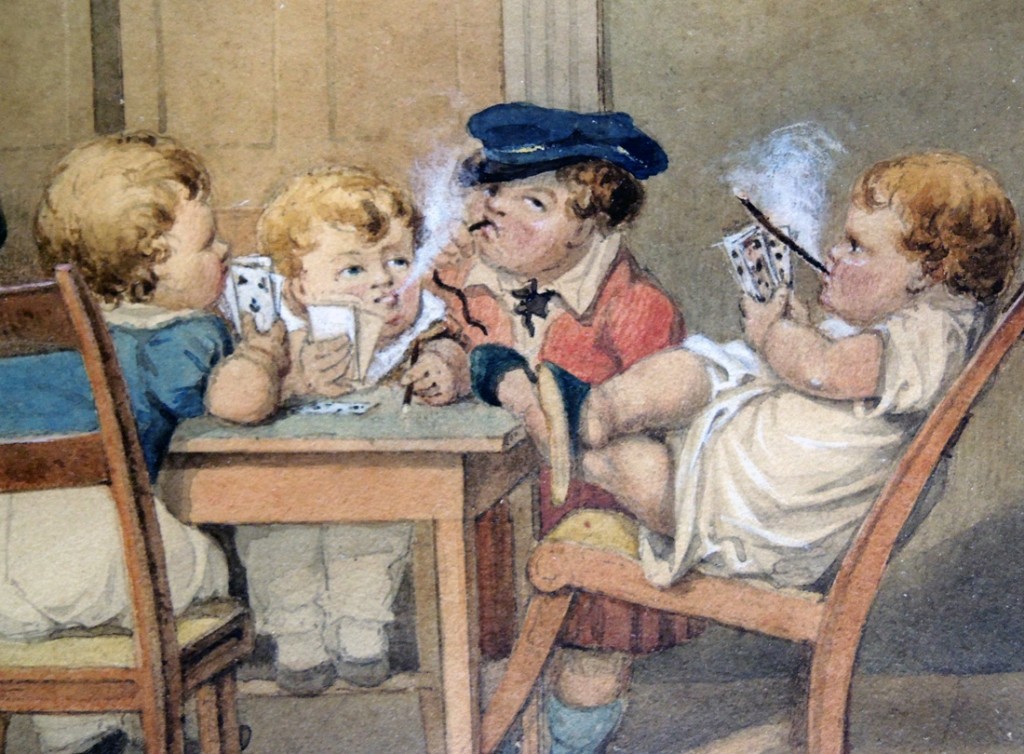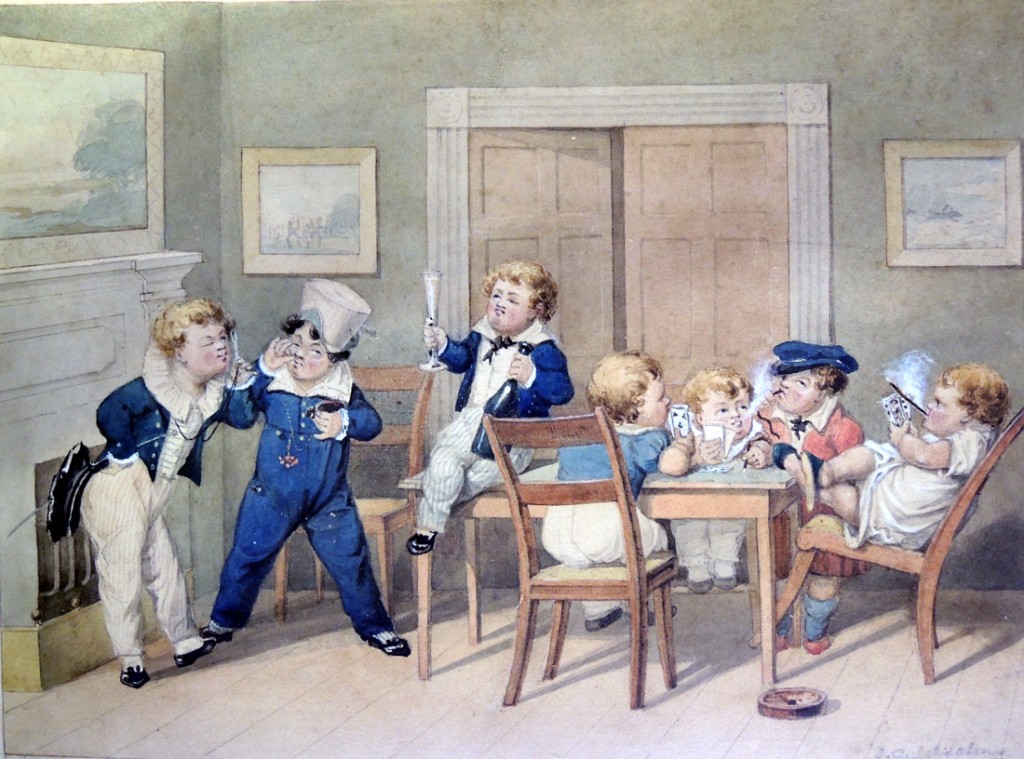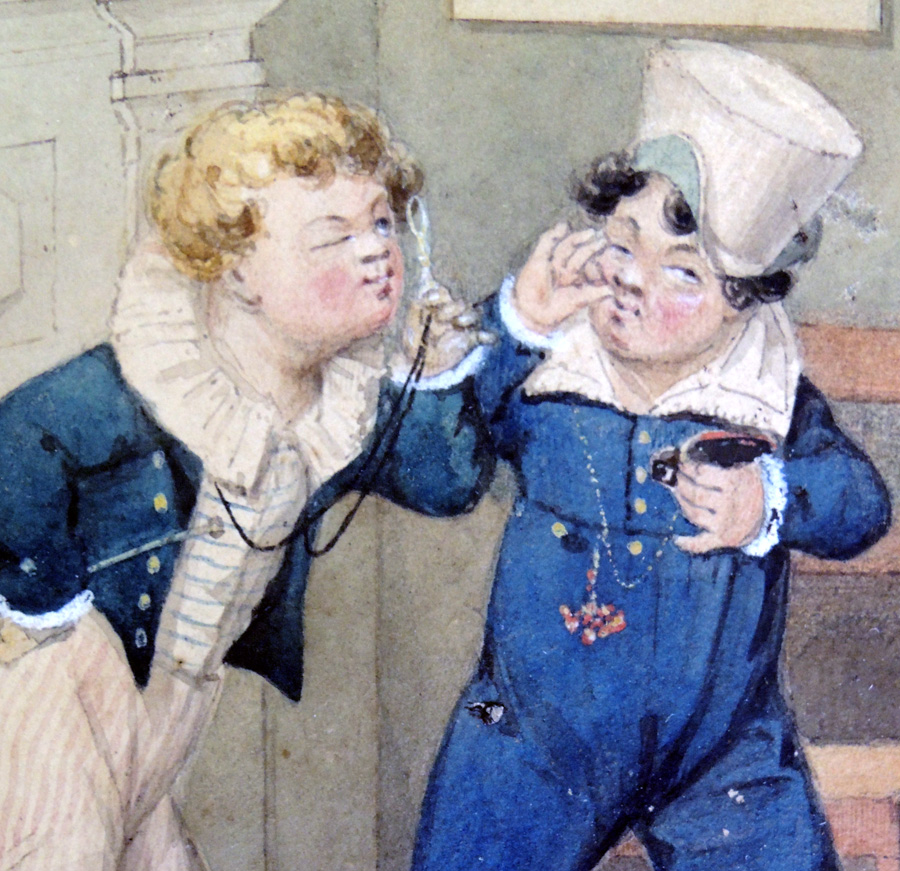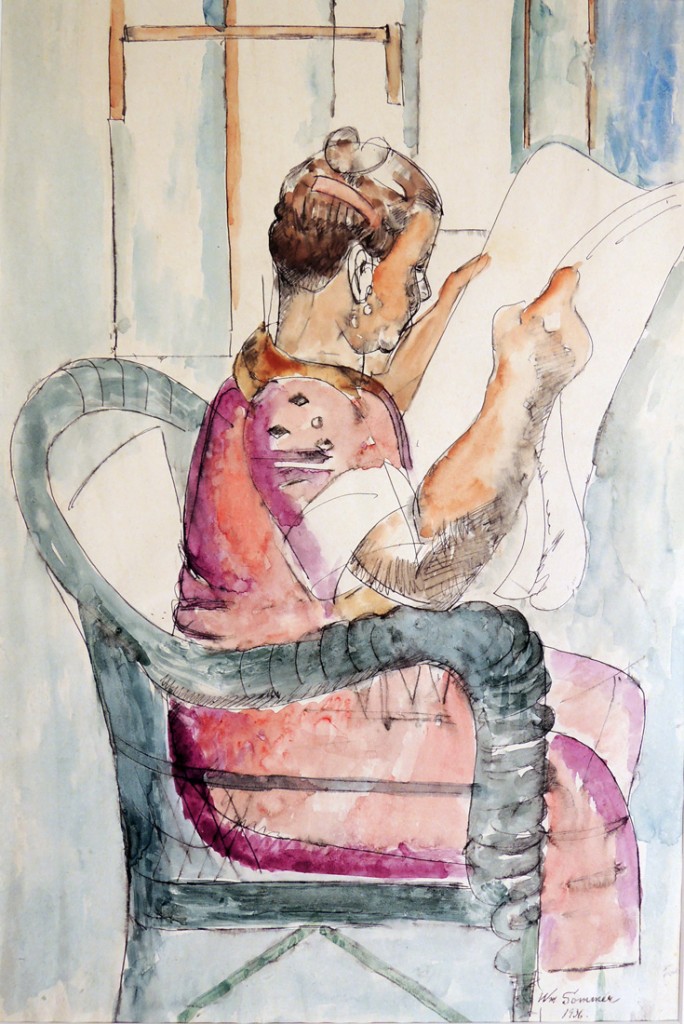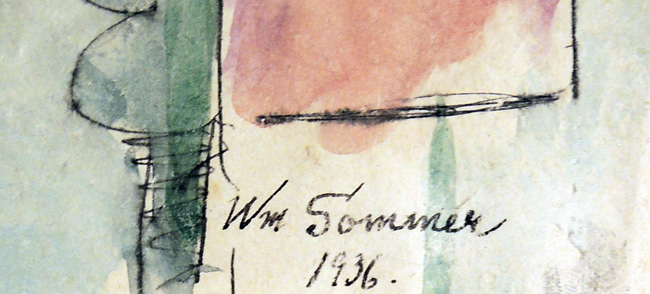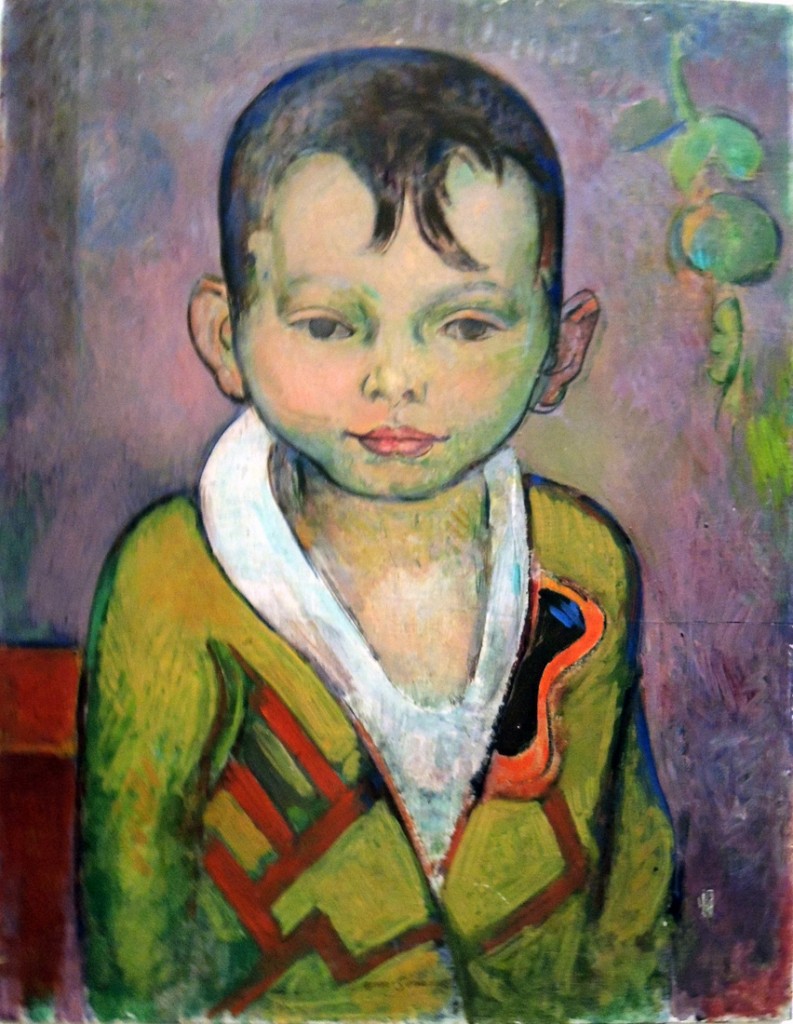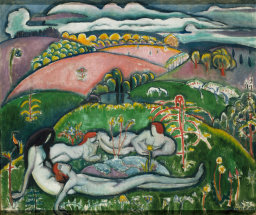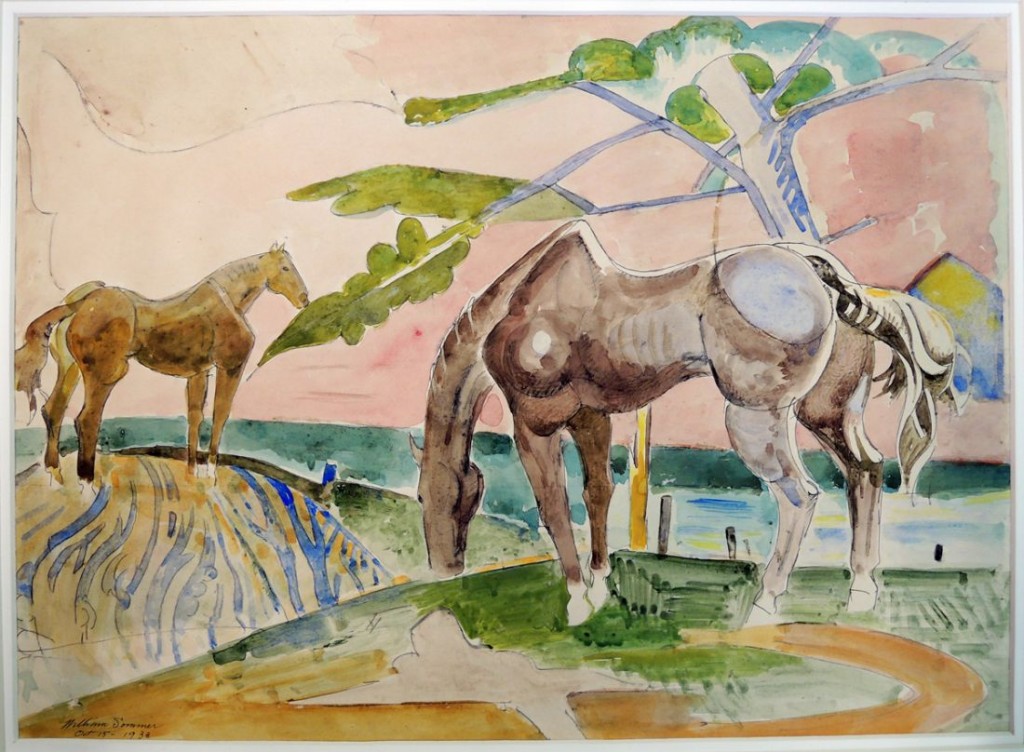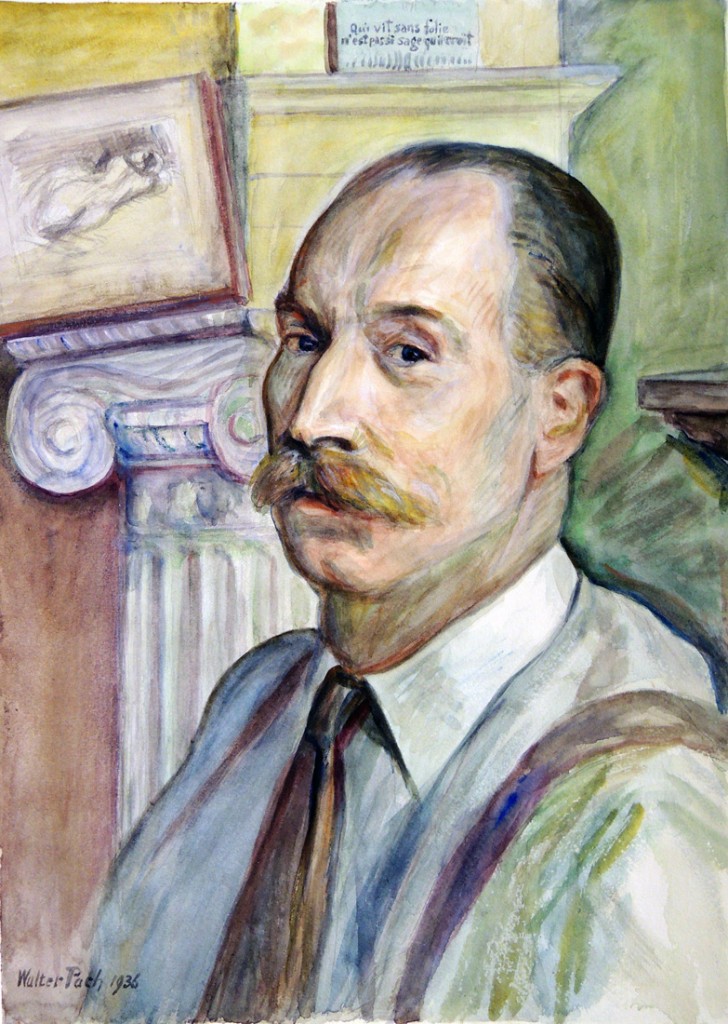
Albert Fitch Bellows (1829-1883), Flowers in Field, no date. Watercolor on paper. Koke, p. 37.
Graphic Arts Collection GA 2006.02364
The obituary for American landscape painter Albert Fitch Bellows (1829-1883) noted, “The life of Mr. Bellows was a rich, beatiful harmony. Into it there entered nothing sensational, nothing spasmodic. It was simple, quiet, beautiful He won his way gradually to the front rank of the American artists and maintained his position there by the conscientious work which was characteristic of him. His paintings were not obtrusive, never aggressive, but reflected the quiet, tender, sympathitic nature of the man, and were lovable as he was lovable.” The Art Union 1, no. 1 (January 1884).
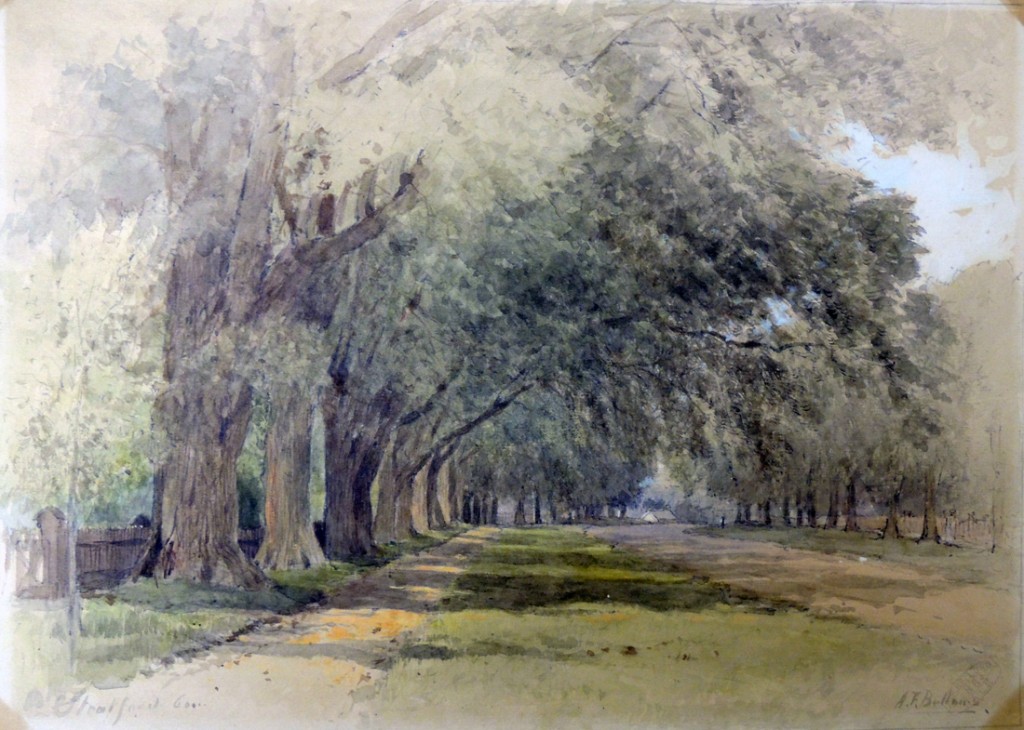
Albert Fitch Bellows (1829-1883), Park in Stratford, Conn., no date. Watercolor on paper.
Graphic Arts Collection GA 2006. 02365
The piece goes on to recognize that he was one of the early members of the American Water-Color Society and in 1868 was elected an honorary member of the Royal Belgian Society of Water Colourists—an honor which requires the unanimous vote of the members, and which is rarely conferred upon foreigners. Also that year, Bellows wrote a treatise on watercolor painting, published under the American Society: Water-color painting. Some facts and authorities in relation to its durability (New York: Printed by the American Society of Painters in Water-Colors, 1868). A copy of this rare volume has yet to be acquired by Princeton.
Bellows was also a talented etcher and thanks in part to gifts from Sinclair Hamilton, the Graphic Arts collection holds a number of books illustrated with his prints, including:
Clarence Cook (1828-1900), A Description of the New York Central Park (New York: F.J. Huntington, 1869) Graphic Arts Collection (GAX) Oversize Hamilton 1492q
Poets and etchers, Poems by T.B. Aldrich, W.C. Bryant, R.W. Emerson, J.R. Lowell, H.W. Longfellow, J.G. Whittier; etchings by A.F. Bellows, Samuel Colman, Henry Farrer, R. Swain Gifford, J.D. Smillie (Boston: James R. Osgood and Company, 1882), Graphic Arts Collection (GAX) Oversize 2006-0920Q
Washington Irving (1783-1859), Sketch book of Geoffrey Crayon, gent. … Illustrated with one hundred and twenty engravings on wood, from original designs (New York: G. P. Putnam, 1864). Graphic Arts Collection (GAX) Oversize Hamilton 662q
The Sunnyside book, with Bryant, Curtis, Stedman. . . and artists Wm Hart, Hows, Darley, Nast, Casilear, Smillie, Shattuck, McEntee, Belows, Huntington (New York: G. P. Putnam & Sons, 1871) Graphic Arts Collection (GAX) Oversize Hamilton 673q
Alice Cary (1820-1871), Ballads, Lyrics, and Hymns (New York: Hurd and Houghton, 1866). Graphic Arts Collection (GAX) Hamilton 797.
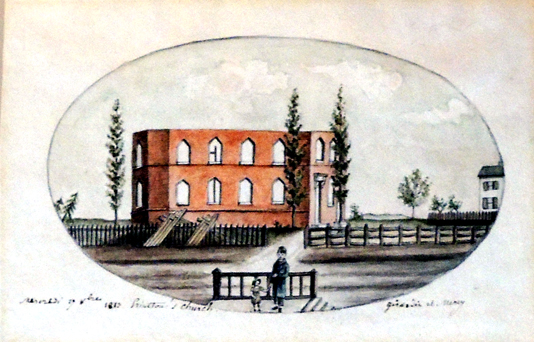 Anne Marguerite Hyde de Neuville (ca. 1749-1849), Church at Princeton, New Jersey with Girardin and Mary, 1813. Watercolor on paper. Graphic Arts Collection GA 047 Princetoniana. Acquired with funds contributed by the Friends of the Princeton University Library and by Bernard Kilgore, formerly Elder of the First Presbyterian Church of Princeton.
Anne Marguerite Hyde de Neuville (ca. 1749-1849), Church at Princeton, New Jersey with Girardin and Mary, 1813. Watercolor on paper. Graphic Arts Collection GA 047 Princetoniana. Acquired with funds contributed by the Friends of the Princeton University Library and by Bernard Kilgore, formerly Elder of the First Presbyterian Church of Princeton. To continue reading about this watercolor by the Baroness Hyde de Neuville, see the Princeton University Library Chronicle, 29, no.2 (winter 1968): http://libweb5.princeton.edu/visual_materials/pulc/pulc_v_29_n_2.pdf
To continue reading about this watercolor by the Baroness Hyde de Neuville, see the Princeton University Library Chronicle, 29, no.2 (winter 1968): http://libweb5.princeton.edu/visual_materials/pulc/pulc_v_29_n_2.pdf

